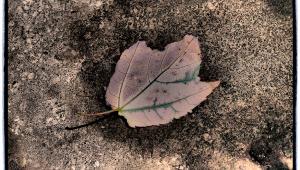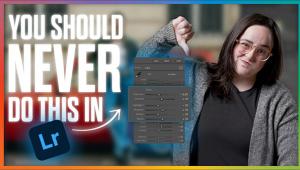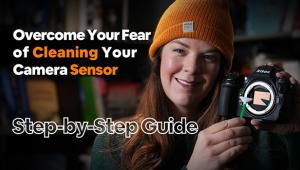Image Editing With Paint Shop Pro 9; A Software With Its Own Approach And Style Page 2
Open an image. On the main menu bar, click Adjust to Photo Fix to Digital Camera Noise Removal. A new window opens. Again you'll see two panels, the right panel for navigation and the left providing an area to select the noise samples. At the bottom of the window you'll see your image as a full thumbnail that contains three cross hairs. Each cross hair indicates the location of an area that has been automatically sampled. You can use the zoom and/or navigation tools to take a closer look. You may also add more sample areas, but be careful to select large solid blocks of similar pixels and to avoid edges and borders.
Optionally, you can check the Camera Preset button if you wish to base the noise reduction on the defaults established for the particular camera that captured the image instead of the image itself. Since cameras can react differently under different conditions, more often you'll get better results when you evaluate the image instead of relying on the Camera Preset.
Three separate controls can be tweaked to fine-tune the results. The first, Noise Correction, is used to control the amount of correction in Small, Medium, and Large spatial bands. Next, the Correction Blend setting will adjust the amount that the corrected areas blend with the rest of the image. A setting of 100 applies correction throughout the image. The default value (70) provides good results. Finally, the Sharpening control can be set to evoke automatic image sharpening at the conclusion of the noise reduction. Default value is 0 (zero) and that's the best place to leave it--there's more control if you handle image sharpening as a separate operation.
If there is an area of the image that should be left unsharpened (skin texture,
the rough surface of an orange, etc.) you may protect it by clicking the Protect
Image tab and selecting the appropriate color range. Just hold down the Control
key and use the mouse cursor to select a sample of the area that is to be protected.
The color range is graphically displayed below.
Finally, click the Proof button to preview the noise reduction effects, and
OK to apply the changes.
Knocking Out The Background
Last but not least, when you want to knock out the background of your image
to add a background of your own (or for any other reason) you'll find
that Paint Shop Pro 9 really sparkles. Paint Shop calls this feature Background
Eraser and using it is fun and easy. It also provides a quick way to recover
from mistakes that's as simple as a right-click.

The Background Eraser tool shares a spot with the regular Eraser tool on the
Tools toolbar located on the left side of the main window. When clicked, a variety
of control settings will appear on the top menu bar. The first seven settings
control the brush size, shape, hardness, etc. After adjusting the brush to suit
your taste, click the Auto Tolerance check box and the Background Eraser will
automatically decide how closely the selected pixels must match the sample pixel.
At lower settings, the pixel colors must match very closely in order to be erased.
At higher settings, more pixels will be erased from the background.
The Sampling drop-down menu allows you to select how the tool determines which
pixels to erase. If you choose BackSwatch or ForeSwatch, the tool erases all
pixels that match the background or foreground color on the Materials palette.
If you choose Once, the tool determines the color that is at the center of the
brush when you next click, and uses that color as long as you keep the mouse
button depressed. The Continuous option does the opposite, and updates the color
as the mouse moves. You'll find it easier if you use the Once setting
and move the mouse in small, controlled strokes.

The next drop-down menu, Limits, allows you to determine whether or not the
pixels you erase must be adjacent. If you select Contiguous, the tool will erase
only adjacent pixels that match the sampled pixels. The Discontiguous setting
erases all matching pixels as you mouse over them, whether they are contiguous
or not. A third option, Find Edges, restricts the tools action based on edge
information.
A nice touch--at any point along the way you can hold down the right mouse
button and undo the background erasure by retracing your steps until all mistakes
are corrected.
With a little practice, you'll find Paint Shop Pro 9 easy and friendly.
The Owners Manual, while robust in size (501 pages) is short on clarity and
suffers from inadequate proofreading. In addition to the three key features
outlined here, this software has many other virtues to recommend it. At $129
(street price is lower with manufacturer's rebate) it's a tool you'll
learn to love for certain tasks.
For more information, contact Corel Corporation, 1600 Carling Ave., Ottawa,
Ontario, Canada K1Z 8R7; (800) 772-6735, (613) 728-8200; www.corel.com.
- Log in or register to post comments

































